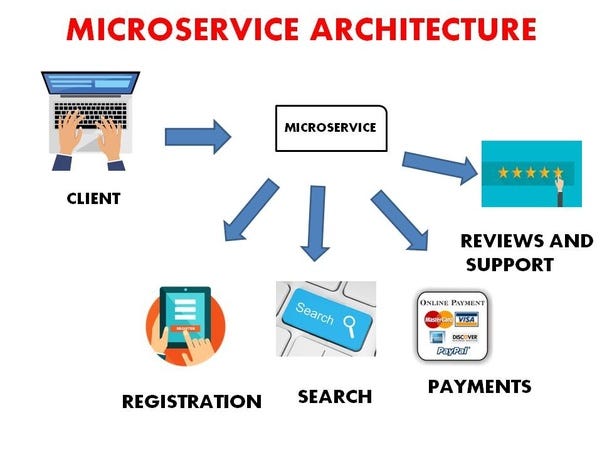Spring boot microservices explained - spring boot tutorials
Before we getting into the microservices, let’s tell you about it’s opposite, i.e monolithic architectural style which is always built as a single, autonomous unit.
So take an example like a web application with client-server model, the server-side application is a monolith which handles the requests, processes, executes business logic, and work with the data in the underlying database.
Microservices is a phenomenon of building applications as a collection of multiple independent services which are loosely coupled”.
It is nothing but decomposing the application into various modules which are independent of each other.
The primary advantage of Microservices is that the modules can be independently deployed. The team size of developers is very less (5–10), so that deployment is very fast.
Now, why microservices came into the picture?
Changes, scalability, maintenance etc. Yes, what if you come across some change or some sort of migration?
Any modification made to a small section of an application requires deploying an entirely new version.
For that, microservices came into the picture, which is the architectural style, it is the approach for developing a single application as a suite of small services, each running in its own process and communicating with lightweight mechanisms, a resource API.
It’s lightweight, scalable, easy to integrate with third-party services, domain driven design, small and smart end points, better fault isolation and last but not least, is an evolutionary model.
Now, how is it related with Spring Boot for Java?
Microservices allow large systems to be built up from a number of collaborating components.
It does at the process level what Spring has always done at the component level:
loosely coupled processes instead of loosely coupled components and framework that has been evolved to be formidable for Java microservice development is Spring Boot.
It simplifies a spring application development and bootstrapping a spring application.
Build your applications around them. The challenge in developing microservices are
- Deciding: the boundaries of these individual microservices. Biggest challenge. Domain Driven Design might help! But this takes the experience to figure out
- Implementing them quickly: We will not have one project but maybe 100 microservices. So, you would want to be able to develop them quickly.
- Cloud Native: To really benefit from microservices architectures, they should be cloud-native i.e. easily deployable on the cloud. This would give you the benefits of scaling up and down easily — Reduced costs, who wouldn’t like that!
- Automation: You should be able to automate the entire deployment and monitoring process.
Source:
